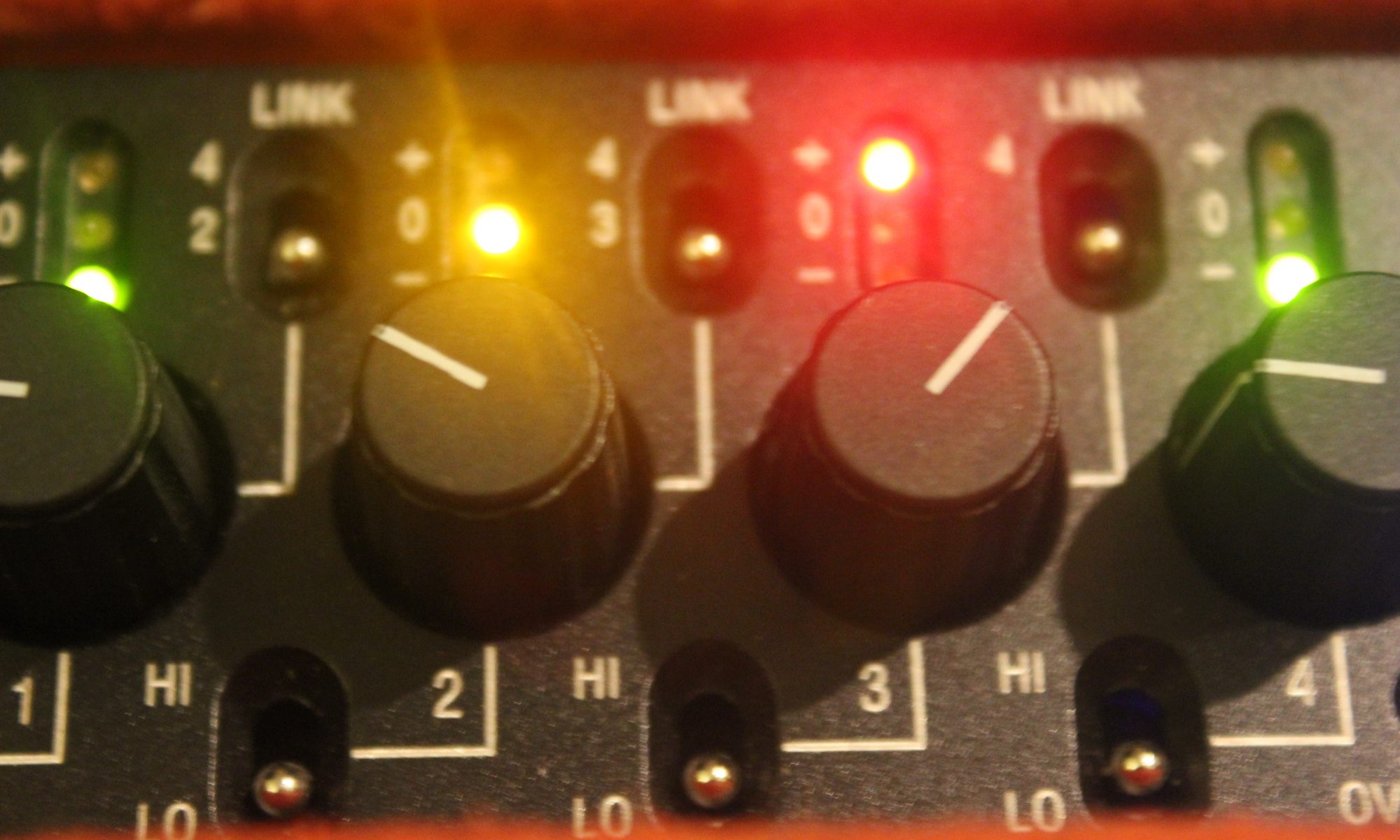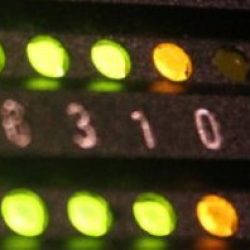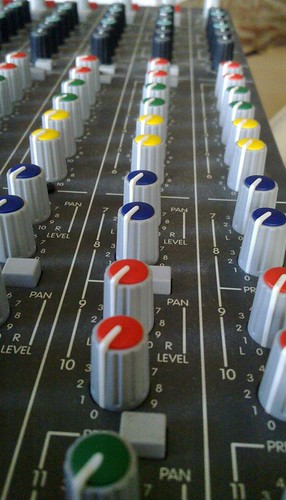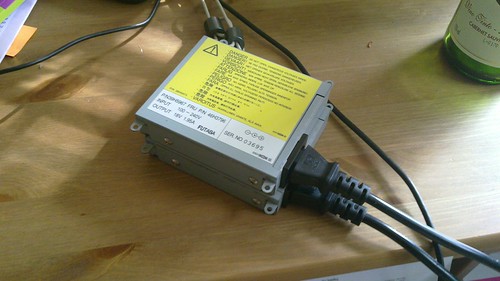I’ve done a comparison of the various models of (reasonably) high end radio microphones available in the UK which will work with DC powering. As a number of them work with 2 transmitters to 1 receiver, I’ve also made a cost comparison (most competetive I could find, including VAT) of 2 sets and put in the weight of the transmitters.
Transmission systems:
Analogue: Up until recently all radio microphones were analogue. They use a compander circuit which compressed the audio signal on transmission and expands it in at the receiver. The circuits need to be compatible on each end to match
Digital Hybrid: Here a digital signal processor at both ends of the system looks at the incoming analogue signal coming in an compares it to a predictor algorithm, and sends any difference from this to the receiver as an analogue signal which will recreate the original. They can also program in different compander algorithms, which can mean the receivers can work with other equipment. The conversion and processing adds some latency (time in ms)
Digital: With ‘pure’ digital systems, the signal is converted into a digital signal and compressed using a high-speed codec (like mp3 but faster to read/write and maybe better quality) before transmission. This means they don’t use a compander at all and there are less analogue to digital conversions than with hybrid systems. The conversion processes also add latency
Diversity:
This effectively means that the receiver has two goes at picking up the signal and picks the strongest, however the point where this happens depends on the receiver design (all receivers here have diversity in some form). “True” diversity requires two separate receiver circuits, whereas antenna diversity switches between the signals from the two antennae. In analogue systems it is often audible when switching between antennae, although I’m not certain with digital systems. Also only two systems have true diversity in a dual channel receiver (4 receiver circuits), the Wisycom and Audio ltd EN2.
Bandwidth:
Although UK Channel 38, which we’re all supposed to be using next year is only 8MHz from 606-614Mhz, if you’re doing any work abroad or getting site-specific licenses you may have to be more flexible (or if things like ‘white-space’ devices start popping up). The Wisycom, Sennheiser and Audio Wireless systems have larger bandwidths (at a cost)
Remote:
Some of the systems have methods of remotely monitoring and/or controlling the receivers, and a number of them require buying a separate add-on or device. Both digital systems will allow full control of transmitters from the receiver and the Sony system will allow you to name transmitters. The other systems require things like infra-red remote controls (which may not penetrate costume). The Lectrosonics system uses audio tones through the attached microphone.
Output:
A few of the digital systems will allow digital output to recorders/cameras which have it, which can free up some more channels and reduce conversion processes. Only the Sony system has word clock, so can be used in multiple instances in a system without sample rate converters.
Notes:
One of the main differences between the Zaxcom system and the others is that it can do some things which would require additional hardware. The transmitters also act as 2.4GHz receivers so talkback and timecode transmission can be used with them if the receiver has the IFB option (or from a Zaxcom recorder). Finally, some of the transmitters have recording facilities (for backup purposes) and will transmit in stereo.
Also, finally- if you are buying radio mics in the UK, make sure they’re Channel 38 compatible (606-614MHz), the current band, Channel 69 (854-863MHz) is probably going to be sold to mobile phone companies after the olympics. Also the (otherwise lovely looking) Lectrosonics D4 isn’t available here as it uses a current GSM mobile band, so it won’t work.
| System (RX/TX) |
Transmission system |
Diversity |
RX weight |
Dimensions (mm) |
Bandwidth (CH38) |
Remote |
Output |
RX cost |
TX cost |
Price: 2xTX+2xRX |
Notes |
| Lectrosonics SR / SMB |
Digital Hybrid
(3ms) |
Antenna (1ch true) |
195g |
68x89x18 |
25.5MHz |
All with RM (£462). Or phone app (£30) |
Analogue |
£1,650.00 |
£1,170.00 |
£3,990.00 |
Compatible with Senn HiDyn+, Shure, Audio ltd tx. Scan function |
| Lectrosonics UCR411a / SMB |
Digital Hybrid
(3ms) |
True (1ch) |
330g |
82x120x31 |
25.5MHz |
All with RM (£462). Or phone app (£30) |
Analogue |
£1,250 |
£1,170.00 |
£4,840.00 |
Compatible with Senn HiDyn+, Shure, Audio ltd tx. Scan function. Front end tracking |
| Zaxcom QRX100 / TRX900LT |
Digital (3.6ms) |
Antenna
(1ch true) |
170g |
83x133x32 |
30MHz |
All + IFB/TC – IFB board
needed £590 (2.4GHz) |
Analogue+ AES |
£1692
(£2282 w/IFB) |
£1,149.60 |
£3990 / £4580 |
Stereo transmission. IFB allows
2 way audio, TC, recording option on TX. Camera link TX. Scan |
| Wisycom MCR42 / MTP30 |
Analogue with digital expander
(1.3ms) |
TRUE (2ch) |
180g |
68x115x18 |
240MHz |
All (IR), (battery on emulations) |
Analogue+ AES |
£2,548.00 |
£1,978.00 |
£6,504.00 |
Compatible with Senn HiDyn+, HDX, Audio ltd and most other analogue systems. Scan. 10mW circulator on TX. Moveable filters |
| Sony DWR-S02D / DWT-B01 |
Digital
(3.4/3.6ms) |
Antenna |
280g |
88x119x31.3 |
72MHz
/ 66MHz (tx) |
All + metadata (2.4GHz) |
Analogue + AES
(+Word Clock) |
£1,901.33 |
£1,278.84 |
£4,457.00 |
USB keyboard input. 7V power only. Scan, full remote control of TX from RX. TX power goes down to 1mW |
| Audio Ltd EN2 |
Analogue |
TRUE (2ch) |
196g |
63x139x20 |
24MHz |
|
Analogue |
|
whole kit |
£2,753.00 |
LCD on side. Scan. mini TX avalable |
| Sennheiser EK3241B / SK5212-II |
Analogue |
True (1ch) |
200g (x2) |
74x120x28 |
36MHz RX,
184MHz TX |
Battery (RF) |
Analogue |
£1277 (x2) |
£1,996.00 |
£6,546.00 |
RX can be reprogrammed within a 240MHz block. 10mW circulator on TX |
| Micron SDR550 / TX700 |
Analogue |
True (1ch) |
200g (x2) |
63x121x22 |
32MHz |
|
Analogue |
£1618 (x2) |
whole kit |
£3,236.00 |
no LCD display, New tiny TX |
| Audio limited DX2040 / miniTX |
Analogue |
True (1ch) |
250g (x2) |
64x147x20 |
24MHz |
All on separate IR device |
Analogue |
£1716 (x2) |
£960.00 |
£5,352.00 |
display on switchIR only (£50). Scan on palmpilot only. TX is Tiny |
| Audio Wireless |
Analogue |
True (1ch) |
200g (x2) |
62x114x20 |
32/64/120MHz |
|
Analogue |
£1275/£1700
/£2150 (x2) |
whole kit |
£2750/£3400
/£4300 |
LCD on side |








